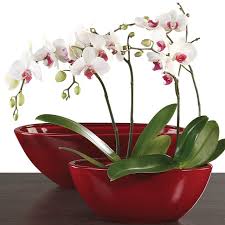Caring for Phalaenopsis Orchids in Dry Weather: Essential Tips for Successful Cultivation
 Phalaenopsis orchids, commonly known as moth orchids, are beloved for their stunning blooms and relative ease of care. However, when it comes to cultivating these beautiful plants in dry weather, certain challenges arise. This guide will explore essential tips and practices for successfully caring for Phalaenopsis orchids in arid conditions, ensuring that they thrive and continue to bloom beautifully.
Phalaenopsis orchids, commonly known as moth orchids, are beloved for their stunning blooms and relative ease of care. However, when it comes to cultivating these beautiful plants in dry weather, certain challenges arise. This guide will explore essential tips and practices for successfully caring for Phalaenopsis orchids in arid conditions, ensuring that they thrive and continue to bloom beautifully.
## Table of Contents
1. **Understanding Phalaenopsis Orchids**
– 1.1 Overview of the Species
– 1.2 Importance of Environmental Conditions
2. **Recognizing Signs of Stress in Orchids**
– 2.1 Symptoms of Dry Weather Stress
– 2.2 Importance of Early Detection
3. **Adjusting Watering Practices**
– 3.1 Frequency of Watering
– 3.2 Techniques for Efficient Watering
– 3.3 Signs of Overwatering and Underwatering
4. **Humidity Levels and Their Impact**
– 4.1 Ideal Humidity Levels for Phalaenopsis Orchids
– 4.2 Methods to Increase Humidity
– 4.3 Using Humidifiers and Pebble Trays
5. **Light Requirements in Dry Weather**
– 5.1 Understanding Light Needs
– 5.2 Adjusting Light Exposure
– 5.3 Avoiding Sunburn on Leaves
6. **Soil and Potting Considerations**
– 6.1 Choosing the Right Potting Mix
– 6.2 Repotting Techniques for Healthy Roots
– 6.3 Drainage Solutions for Dry Conditions
7. **Fertilization Practices**
– 7.1 Nutrient Needs During Dry Weather
– 7.2 Types of Fertilizers to Use
– 7.3 Timing and Frequency of Fertilization
8. **Pest and Disease Management**
– 8.1 Common Pests in Dry Conditions
– 8.2 Identifying Signs of Disease
– 8.3 Preventive Measures and Treatment Options
9. **Monitoring and Maintenance**
– 9.1 Regular Care Routines
– 9.2 Importance of Observation
– 9.3 Adjusting Care Based on Seasons
10. **Conclusion: Thriving in Dry Weather**
– 10.1 Recap of Key Tips
– 10.2 Encouragement for Orchid Enthusiasts
—
## 1. Understanding Phalaenopsis Orchids
### 1.1 Overview of the Species
Phalaenopsis orchids are native to tropical regions of Asia and are known for their long-lasting, elegant flowers. They are among the most popular orchids due to their adaptability and ease of care, making them ideal for both novice and experienced gardeners. These orchids thrive in conditions that mimic their natural habitat, which includes warm temperatures and moderate humidity levels.
### 1.2 Importance of Environmental Conditions
Creating the right environment for Phalaenopsis orchids is crucial for their growth and flowering. Factors such as temperature, humidity, and light significantly influence their health. During dry weather, these conditions can fluctuate, requiring extra attention and care to ensure that orchids receive the right amount of moisture and nutrients.
## 2. Recognizing Signs of Stress in Orchids
### 2.1 Symptoms of Dry Weather Stress
When exposed to dry conditions, Phalaenopsis orchids may exhibit several signs of stress. Common symptoms include:
– **Wrinkled Leaves:** This indicates dehydration, as the plant is losing moisture faster than it can absorb it.
– **Leaf Drop:** Sudden leaf drop can occur when the plant is not receiving adequate moisture.
– **Browning Leaf Edges:** This is often a sign of insufficient humidity levels.
### 2.2 Importance of Early Detection
Early detection of stress symptoms is vital for successful orchid care. By recognizing the signs of distress promptly, you can take corrective measures to address the issues before they escalate, helping your orchids recover and thrive in dry weather.
## 3. Adjusting Watering Practices
### 3.1 Frequency of Watering
In dry weather, the frequency of watering will likely increase. Phalaenopsis orchids typically need to be watered once a week, but in arid conditions, this may change. Always check the potting medium before watering—if the top inch feels dry, it’s time to water.
### 3.2 Techniques for Efficient Watering
Use the following techniques for effective watering:
– **Soak and Dry Method:** Water thoroughly, allowing excess water to drain out. This promotes healthy root growth and prevents rot.
– **Watering in the Morning:** Watering in the morning allows the plant to absorb moisture before the heat of the day.
### 3.3 Signs of Overwatering and Underwatering
Recognizing the signs of overwatering and underwatering is essential:
– **Overwatering Symptoms:** Yellowing leaves, mushy roots, and a foul odor from the potting mix.
– **Underwatering Symptoms:** Wrinkled leaves, brown tips, and a dry potting mix.
## 4. Humidity Levels and Their Impact
### 4.1 Ideal Humidity Levels for Phalaenopsis Orchids
Phalaenopsis orchids thrive in humidity levels between 40% and 70%. During dry weather, humidity levels can drop significantly, which can negatively affect their health.
### 4.2 Methods to Increase Humidity
Consider these methods to increase humidity around your orchids:
– **Grouping Plants:** Placing orchids close together can create a microclimate with higher humidity.
– **Using a Humidifier:** A portable humidifier can help maintain consistent humidity levels in your growing area.
### 4.3 Using Humidifiers and Pebble Trays
– **Pebble Trays:** Fill a tray with pebbles and water, placing your orchids on top. As the water evaporates, it increases humidity around the plants.
– **Humidifiers:** Investing in a humidifier can be especially beneficial during dry spells, helping to maintain optimal humidity levels.
## 5. Light Requirements in Dry Weather
### 5.1 Understanding Light Needs
Phalaenopsis orchids prefer bright, indirect light. While they can tolerate lower light conditions, too much direct sunlight can lead to stress and damage.
### 5.2 Adjusting Light Exposure
During dry weather, you may need to adjust your orchids’ exposure to light. Consider the following:
– **Filtering Direct Sunlight:** Use sheer curtains or blinds to diffuse harsh sunlight.
– **Rotating Plants:** Regularly rotate your orchids to ensure even light distribution and prevent uneven growth.
### 5.3 Avoiding Sunburn on Leaves
Monitor your orchids for signs of sunburn, such as scorched leaf tips or bleached patches. If you notice these symptoms, adjust their placement to provide more shade and protection from direct sunlight.
## 6. Soil and Potting Considerations
### 6.1 Choosing the Right Potting Mix
Selecting an appropriate potting mix is crucial for the health of Phalaenopsis orchids. Use a well-draining mix specifically designed for orchids, typically containing bark, perlite, and sphagnum moss.
### 6.2 Repotting Techniques for Healthy Roots
Repotting is essential for maintaining healthy roots and preventing rot:
– **Timing:** Repot orchids every 1-2 years or when the potting mix breaks down.
– **Techniques:** Carefully remove the plant from its pot, trim any dead roots, and place it in fresh potting mix.
### 6.3 Drainage Solutions for Dry Conditions
Ensure that your pots have adequate drainage to prevent waterlogging:
– **Using Clay Pots:** Clay pots are porous and allow for better airflow and drainage.
– **Adding Drainage Holes:** If using plastic pots, ensure they have sufficient drainage holes for excess water to escape.
## 7. Fertilization Practices
### 7.1 Nutrient Needs During Dry Weather
Phalaenopsis orchids benefit from regular fertilization to promote healthy growth and flowering. During dry weather, their nutrient needs may change, requiring adjustments to your fertilization routine.
### 7.2 Types of Fertilizers to Use
Use balanced, water-soluble fertilizers specifically formulated for orchids. Look for a fertilizer with an N-P-K ratio of 30-10-10 or similar to provide the necessary nutrients.
### 7.3 Timing and Frequency of Fertilization
– **Fertilizing Schedule:** Fertilize your orchids every 2-4 weeks during the growing season and reduce frequency during dormancy.
– **Dilution:** Always dilute the fertilizer according to package instructions to prevent root burn.
## 8. Pest and Disease Management
### 8.1 Common Pests in Dry Conditions
Dry weather can lead to an increase in certain pests, such as:
– **Spider Mites:** These tiny pests thrive in dry conditions and can cause leaf discoloration.
– **Mealybugs:** They often hide in leaf axils and can weaken the plant by sucking sap.
### 8.2 Identifying Signs of Disease
Common diseases affecting orchids during dry weather include:
– **Fungal Infections:** Brown spots or fuzzy growths on leaves may indicate a fungal issue.
– **Bacterial Rot:** Soft, mushy spots on leaves or roots suggest bacterial rot, often caused by overwatering.
### 8.3 Preventive Measures and Treatment Options
To prevent and manage pests and diseases:
– **Regular Inspections:** Check your orchids regularly for signs of pests or disease.
– **Natural Remedies:** Use insecticidal soap
or neem oil for pest control, and remove infected plant parts to prevent the spread of disease.
## 9. Monitoring and Maintenance
### 9.1 Regular Care Routines
Establishing a consistent care routine is essential for maintaining healthy orchids:
– **Watering Schedule:** Stick to a regular watering schedule based on environmental conditions.
– **Fertilization Routine:** Follow your fertilization plan and adjust as needed based on plant response.
### 9.2 Importance of Observation
Regularly observe your orchids for any changes in growth, color, or overall health. This practice allows for early detection of potential problems and facilitates timely interventions.
### 9.3 Adjusting Care Based on Seasons
Be flexible in your care routine, adapting to seasonal changes and environmental factors. For instance, increase humidity and watering frequency during the hottest, driest months.
## 10. Conclusion: Thriving in Dry Weather
### 10.1 Recap of Key Tips
Caring for Phalaenopsis orchids in dry weather requires attention to detail and adaptability. Key practices include:
– Adjusting watering schedules
– Increasing humidity levels
– Monitoring light exposure
– Using the right potting mix
### 10.2 Encouragement for Orchid Enthusiasts
With the right care, Phalaenopsis orchids can thrive even in challenging conditions. Embrace the journey of orchid cultivation, and enjoy the beauty and joy these stunning plants bring to your home. By following the tips outlined in this guide, you can ensure your orchids remain healthy and vibrant throughout dry weather.
—
This outline provides a structured approach to writing a comprehensive article on caring for Phalaenopsis orchids in dry weather. Each section can be expanded with detailed information, examples, and tips to meet the 4000-word requirement. If you’d like me to elaborate on any specific section or provide more content for the article, just let me know!

